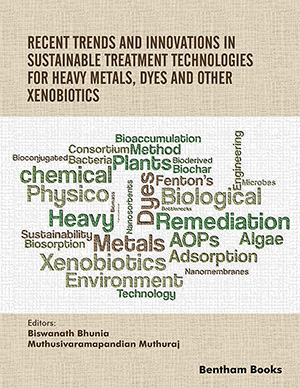Abstract
SHS investigation development is considered from the geographical and historical viewpoint. 3 stages are described. Within Stage 1 the work was carried out in the Department of the Institute of Chemical Physics in Chernogolovka where the scientific discovery had been made. At Stage 2 the interest to SHS arose in different cities and towns of the former USSR. Within Stage 3 SHS entered the international scene. Now SHS processes and products are being studied in more than 50 countries.
Abstract
Heavy metals, dyes and xenobiotic compounds are the primary
environmental contaminants that are accumulating at higher rates attributed to
increased industrialization and uncontrolled release without treatment. These pollutants
have also raised serious concerns about life on earth, attributed to their recalcitrance
and tenacity in the environment. The treatment strategies currently utilize chemical
methods, such as advanced oxidation processes (AOPs) and catalytic processes,
whereas biological processes such as adsorption and accumulation are also
predominant. However, AOPs and catalytic processes are proven to be the potential
methods for heavy metals, dyes, and xenobiotic pollutant remediation in large-scale
applications. Identification and synthesis of novel molecules/ materials that can
effectively recover and remediate heavy metals, dyes and xenobiotic compounds from
wastewater remain one of the key approaches. This chapter highlights the success of
AOPs and catalytic processes in the degradation of dyes, pharmaceuticals compounds,
and heavy metal ions from different water environments and possible future prospects.
Keywords:
Advanced oxidation process, Dyes, Fenton process, Heavy metals, Xenobiotics.
We recommend

Authors:Bentham Science Books






